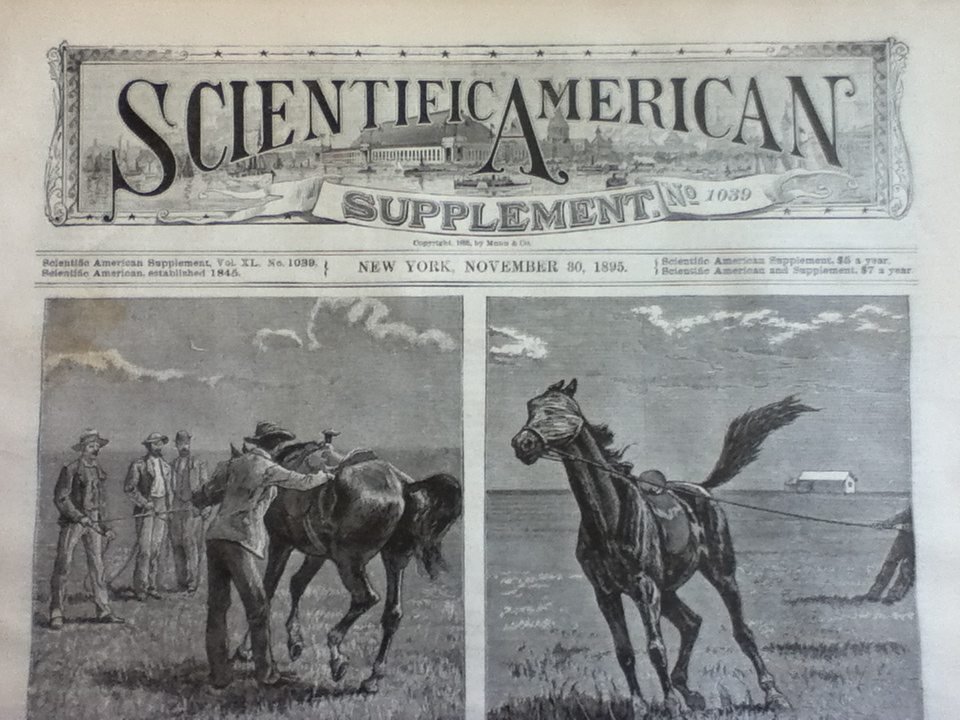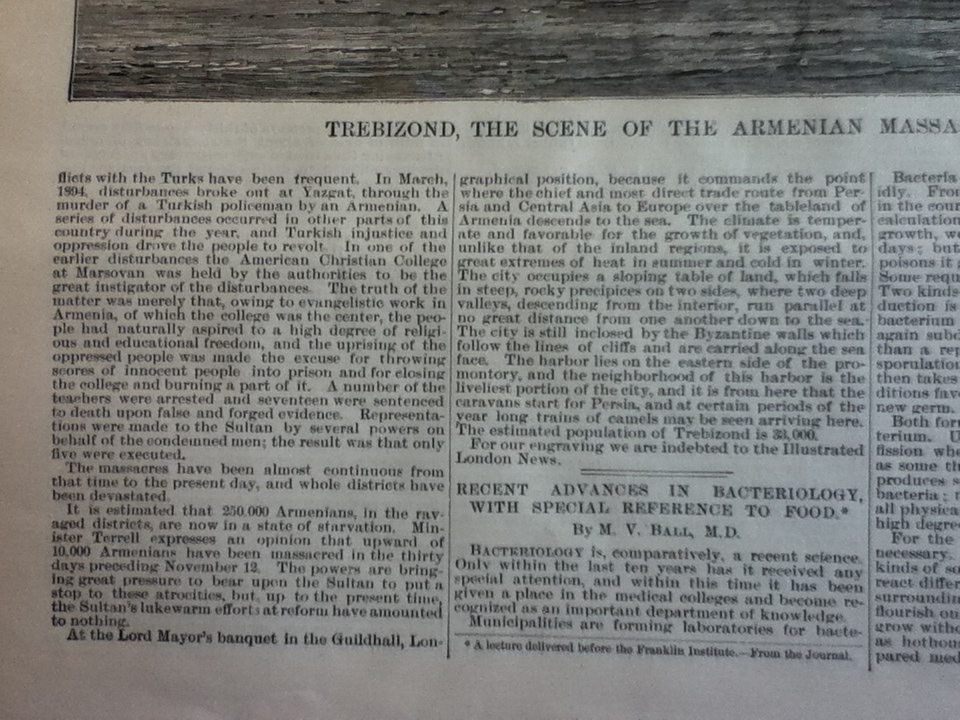Scientific American Supplement ran an article titled, “The Massacres in Armenia,” accompanied by a woodcut print captioned, “Trebizond, the Scene of the Armenian Massacre,” in its Nov. 30, 1895 issue. I discovered this only because my beloved found it online and got it for me as a gift!

Yes, almost exactly 120 years ago, in the thick of the Hamidian Massacres, this illuminating article was printed. Imagine a publication dedicated to the dissemination of scientific and technical information including such an item.
First, I want to thank the “SciAm” (as I like to call it as a long time subscriber) for doing so.

This should perhaps not be surprising, now that we are going through the “America We Thank You” campaign in recognition of the efforts made by Near East Relief during the post-genocide era. How did such an outpouring of support happen? It makes sense that many people had been sensitized to the plight of Armenians in the Ottoman Empire for a long period of time. They were emotionally, psychologically, and politically prepared to open their hearts and wallets to our survivor generation. We were the Syrian refugees, Ethiopians, or Indians of the day. We were the people that, had they existed, the likes of Amnesty International, Human Rights Watch, Medecins Sans Frontieres, and other such groups would have been the advocates of. In their absence, the organizations that took up such causes were churches.

But there are even more interesting aspects to this short item. In providing background, massacres in Yozgat in March 1894 are cited. One missionary, a Minister Terrell, expressed the opinion that 10,000 Armenians had been killed in the 30 days leading up to Nov. 12. Some 250,000 Armenians were thought to be in “a state of starvation.” A “disturbance” in Marsovan is described, which led to death sentences for 17 teachers at the American Christian College there. Intervention by “the powers” led to “only” 5 of them being executed.
These same powers evidently had amassed “a fleet of great strength” in the Dardanelles, and action by this assemblage was anticipated soon. This is where the international politics and scheming of those times becomes evident. One phrase says it all: “Turkey is in one of the most remarkable positions that she has stood for half a century, mainly because the powers resolve that, for the peace of Christendom, it is necessary that she should stand.” Because the Europeans were always on the verge of war to steal bits of one-another’s empires, they could not afford the destabilization of a collapsing Ottoman Empire. As a result, we kept on being massacred by the Bloody Sultan (Abdul Hamid).
Another instructive aspect of this article is its consistent and correct reference to “Armenia” even though the area under discussion was politically/legally part of the Ottoman Empire. We would do well to learn from this because that same area is now (largely illegally) occupied by Turkey. Yet, many of our own compatriots choose not to call it by its proper name, Armenia, contending that “today it is part of Turkey!” Besides the legal incorrectness of this assertion (see the writings and work of Ara Papian), it plays into the hands of the Turkish occupiers of our homeland by perpetuating the perception that Turkey legitimately holds/owns those territories.
As you eat your turkey, thank Scientific American for its contribution to American awareness of the plight of Armenians, for the insight into the workings of international relations of the day, and the awareness this little article gives us, today, of how people thought back then, two decades before the genocide started.


Be the first to comment